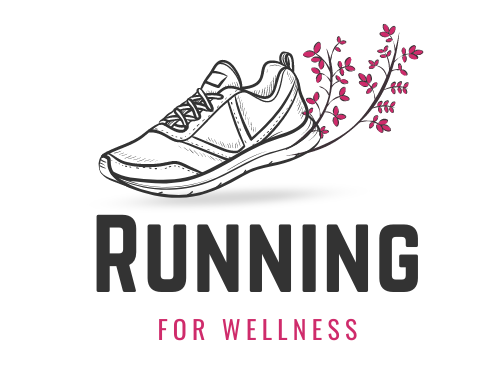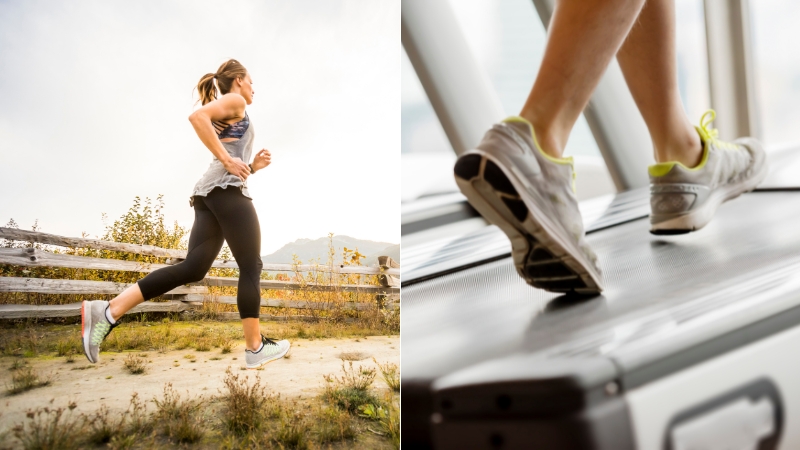Running remains one of the most accessible and effective cardiovascular workouts.
People of all fitness levels rely on it to improve endurance, support weight management, and boost overall health.
Choosing where to run can significantly impact both performance and enjoyment.
Personal goals, convenience, injury history, and even psychological factors all play into the decision.
Both treadmill running and outdoor running offer valuable advantages, but each also comes with its drawbacks.
Table of Contents
ToggleKey Physiological and Biomechanical Differences
Running indoors and outdoors may look similar on the surface, yet the body reacts differently in each environment.
Small changes in surface, air resistance, and terrain can create measurable impacts on performance and injury risk.
Cushioned treadmill belts reduce shock with every step, lowering stress on joints.
Pavement, trails, or track surfaces outdoors provide less cushioning and therefore demand greater resilience from bones and connective tissue.
Muscles such as glutes, hamstrings, and stabilizers also work harder outdoors because the ground remains static, forcing the body to generate propulsion on its own.
Cadence often increases slightly during treadmill running since the moving belt encourages faster turnover, but this efficiency comes at the cost of reduced muscle recruitment.
Outdoor running introduces additional challenges like wind resistance, hills, or uneven ground.
Treadmill sessions remain consistent and predictable, an advantage for structured workouts but a limitation when it comes to natural variability.
Key differences can be summarized as follows:
Benefits of Running on a Treadmill
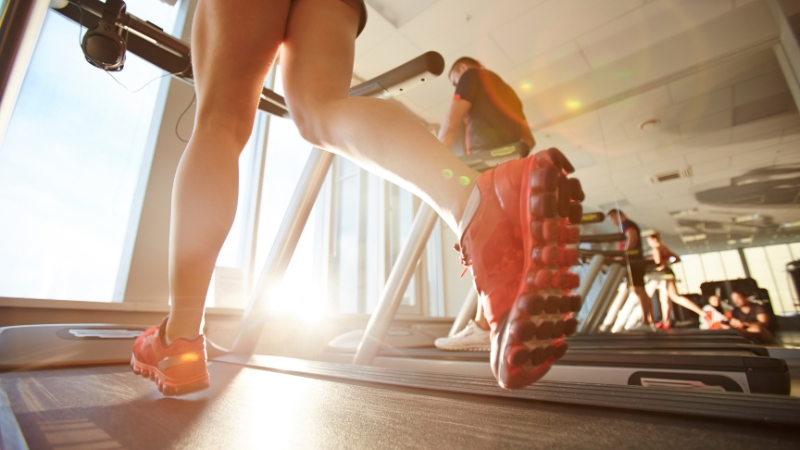
Running indoors provides a level of control and accessibility that outdoor conditions cannot always guarantee.
For many athletes, treadmills act as reliable training partners by offering consistency, convenience, and even entertainment options.
Reduced Impact on Joints
Cushioned belts lower the stress on knees, hips, and ankles, creating a safer option for beginners, older athletes, or individuals returning from injury.
Joint preservation makes treadmills a sustainable choice during recovery phases.
For runners managing chronic foot or ankle issues, consulting a podiatrist, such as those at Gelbmann Podiatry, can help tailor a training plan that reduces injury risk while maintaining cardiovascular fitness.
Controlled Environment
Speed, incline, and workout duration can be set with precision.
This control enables runners to execute interval sessions, simulate hill training, or maintain target race paces without relying on finding the perfect outdoor route.
Advantages of control include:
Year-Round Accessibility
Weather disruptions, unsafe areas, or a lack of daylight do not interfere with treadmill use. Indoor running ensures that training schedules remain consistent throughout the year.
Scenarios where accessibility matters most:
Entertainment & Engagement
Modern treadmills integrate multimedia options to reduce boredom.
Streaming services, interactive running routes, and gamified platforms transform running into a more engaging activity.
Mental Focus
An indoor setting eliminates traffic, uneven surfaces, and external distractions.
For many athletes, this creates an ideal environment for meditative running sessions where rhythm and breathing become the central focus.
Downsides of Treadmill Running
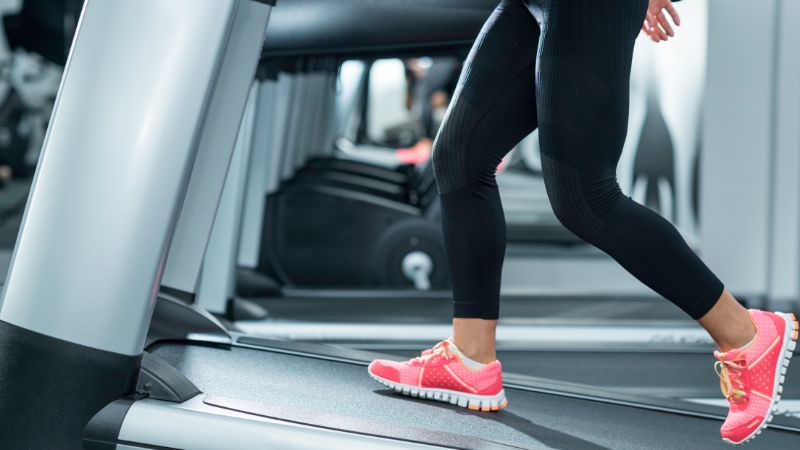
Despite offering convenience and safety, treadmill running is not without its disadvantages.
Runners often experience both physiological limitations and mental hurdles during long-term use.
Limited muscle activation is one drawback, as the moving belt reduces the need for posterior chain muscles to generate forward propulsion.
Monotony is another challenge, with many describing treadmill workouts as mentally draining compared to outdoor runs.
Repetition of identical movement patterns may lead to imbalances or overuse injuries if variety is not introduced.
Lack of natural stimulation, such as sunlight, wind, and changing scenery, removes important motivational and physiological elements.
Research also suggests that shorter stride lengths on treadmills can increase stress on the Achilles tendon.
Main disadvantages include:
Benefits of Running Outside
Running outdoors connects training to real-world environments, offering both physical and psychological benefits.
Many athletes consider outdoor sessions essential not only for preparation but also for overall enjoyment of the sport.
Increased Muscle Activation
Uneven surfaces and natural terrain require constant stabilization, which strengthens glutes, hamstrings, calves, and core muscles.
Everyday movements such as dodging obstacles or running on hills further enhance athletic development.
Muscle benefits outdoors include:
Enhanced Mental & Emotional Benefits
Exposure to sunlight helps regulate Vitamin D levels, supporting bone health and mood stability.
Fresh air and natural surroundings reduce stress levels and increase motivation.
Many runners report higher satisfaction and better emotional well-being after outdoor sessions.
Greater Bone Adaptation
Hard surfaces such as pavement or trails increase ground reaction forces, gradually improving bone strength.
Long-term outdoor running contributes to skeletal resilience, reducing the risk of stress fractures with proper progression.
Variety & Exploration
Constantly changing scenery provides a natural sense of variety that makes runs less monotonous.
New routes, trails, or city streets bring excitement, while unpredictable terrain keeps the body adaptive and resilient.
Key variety elements include:
Downsides of Running Outside

Despite its benefits, outdoor running presents several challenges.
Safety is often the first concern, with traffic, poor visibility, or isolated routes creating risks.
Environmental conditions can also disrupt plans, as extreme heat, snow, or heavy rain may make running unsafe.
Controlling pace outdoors is more difficult without specialized devices such as GPS watches.
Hydration and bathroom breaks can become inconvenient during long sessions compared to indoor setups.
Seasonal gear such as thermal clothing, hydration packs, or reflective vests may be required, adding both cost and planning.
Drawbacks commonly faced include:
When to Choose Each Mode
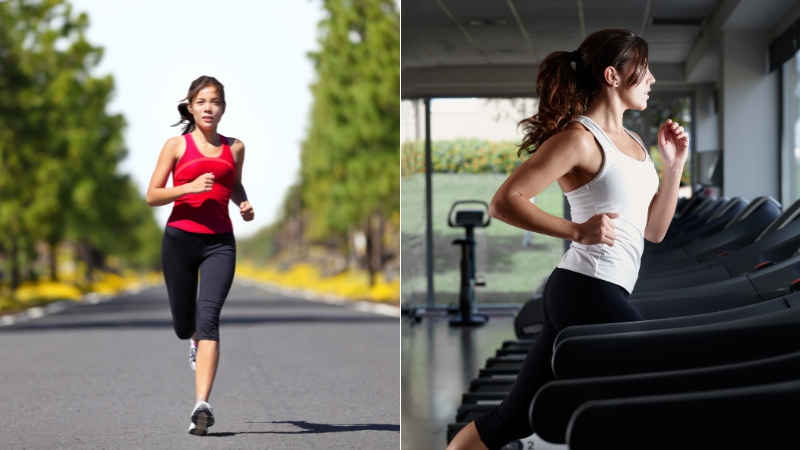
Runners often need to decide which method best supports their current goals, health, and circumstances.
Both treadmill and outdoor options provide value, but certain scenarios clearly favor one over the other.
Treadmill training works best when:
- Recovering from injury or dealing with sensitive joints.
- Performing structured workouts requiring strict pacing.
- Weather conditions are unsafe or inconvenient.
- Running at night in areas with poor visibility.
Outdoor running works best when:
- Preparing for races with varied terrain.
- Seeking mental refreshment and exposure to nature.
- Building strength through natural resistance such as hills and wind.
- Developing endurance and pacing strategies under real-world conditions.
Summary
@shredathleticsTreadmill vs outdoor running. Which is better?♬ original sound – shredathletics
No single method of running fits all athletes. Choosing between treadmill and outdoor sessions depends on personal goals, convenience, and training needs.
Flexibility is key, as alternating between both provides a more complete approach to fitness.
Embracing the strengths of each ensures consistent progress, better health, and a sustainable running practice.
Related Posts:
- 25 Simple Running Motivation Tips To Get You Moving
- How Can You Start a Career as a Running Coach?
- Lower Back Pain While Running? Here's What You Need to Know
- How Far Is a Half Marathon? Everything You Need to Know
- Should You Run on an Empty Stomach? Pros and Cons Explained
- 10 Best Running Documentaries - Inspiring Films for Runners
